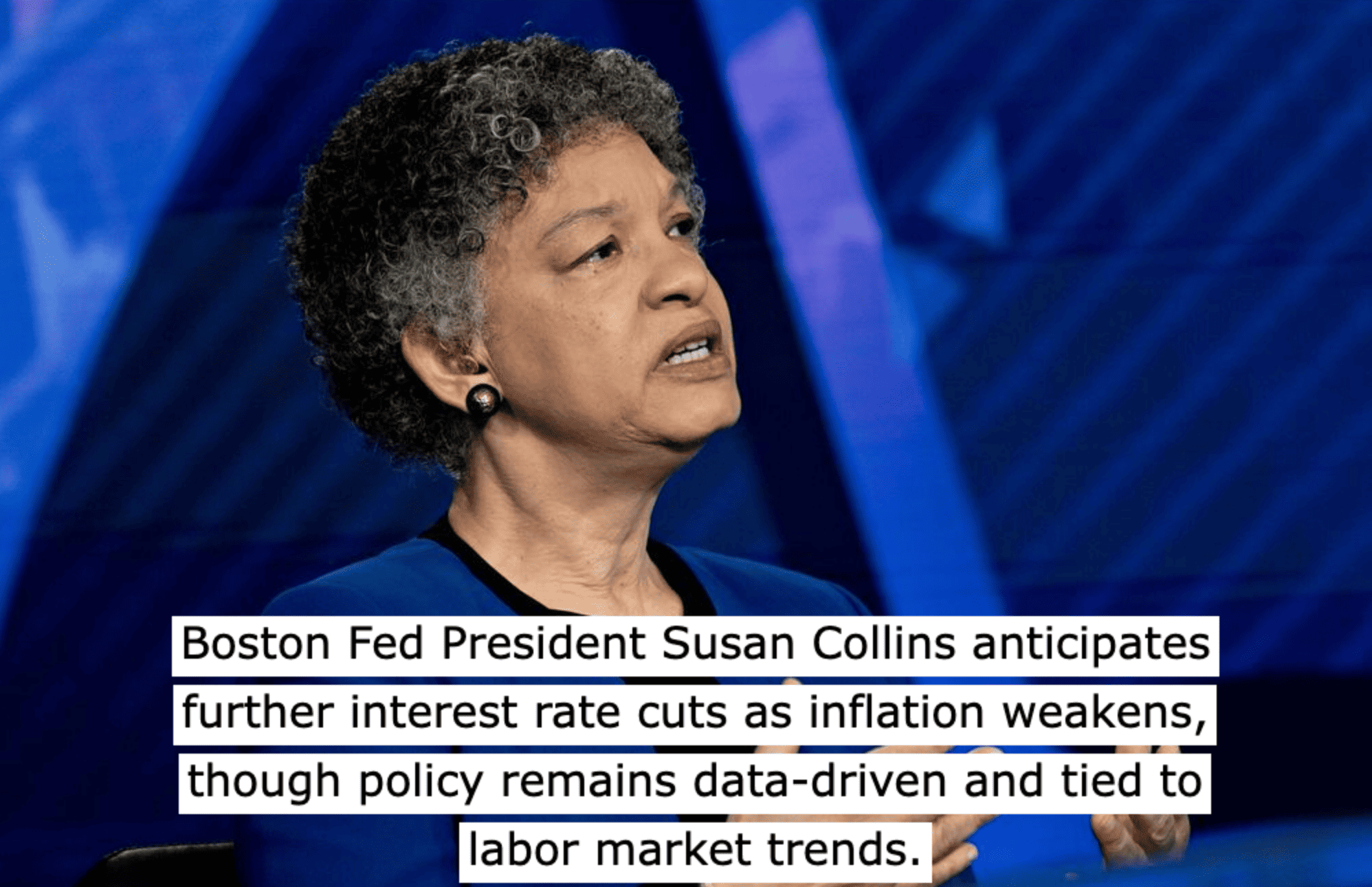Boston Federal Reserve President Susan Collins indicated on Tuesday that more interest rate cuts are highly probable as inflation trends show signs of weakening. Speaking at a conference, Collins highlighted that the U.S. central bank’s policy will remain adaptable to economic data.
“Further adjustments to policy are likely,” Collins stated, reaffirming the Fed’s commitment to data-dependent decisions. This follows the Fed’s September meeting, where officials projected a half-percentage-point reduction in interest rates by the end of the year.
Collins emphasized that the Fed is not following a “pre-set path” and will continue to adjust based on evolving economic conditions.
Her remarks come after September’s unexpectedly strong employment report, which cast some doubt on the pace of future rate cuts. Despite the Fed lowering its overnight target rate range by 50 basis points last month—bringing it to 4.75% to 5%—the robust job market data has led to questions about how aggressively the central bank will proceed with further rate reductions.
While Collins acknowledged that core inflation remains elevated, she expressed growing confidence that inflation is moving towards the Fed’s target of 2%. She also described the job market as “healthy,” with low unemployment levels supporting her view that the labor market is neither overheating nor stalling.
“The recent data, including September’s strong job numbers, reinforce my view that the labor market remains balanced,” Collins said.
Looking ahead, Collins emphasized the importance of maintaining current labor market conditions, which she believes is achievable if economic growth stays close to trend. She added that while wage growth remains elevated, strong productivity gains are helping to mitigate inflationary pressures from wages.
This outlook suggests that while further interest rate cuts are on the horizon, the Federal Reserve will continue to monitor both inflation and labor market trends closely before making additional policy changes.

